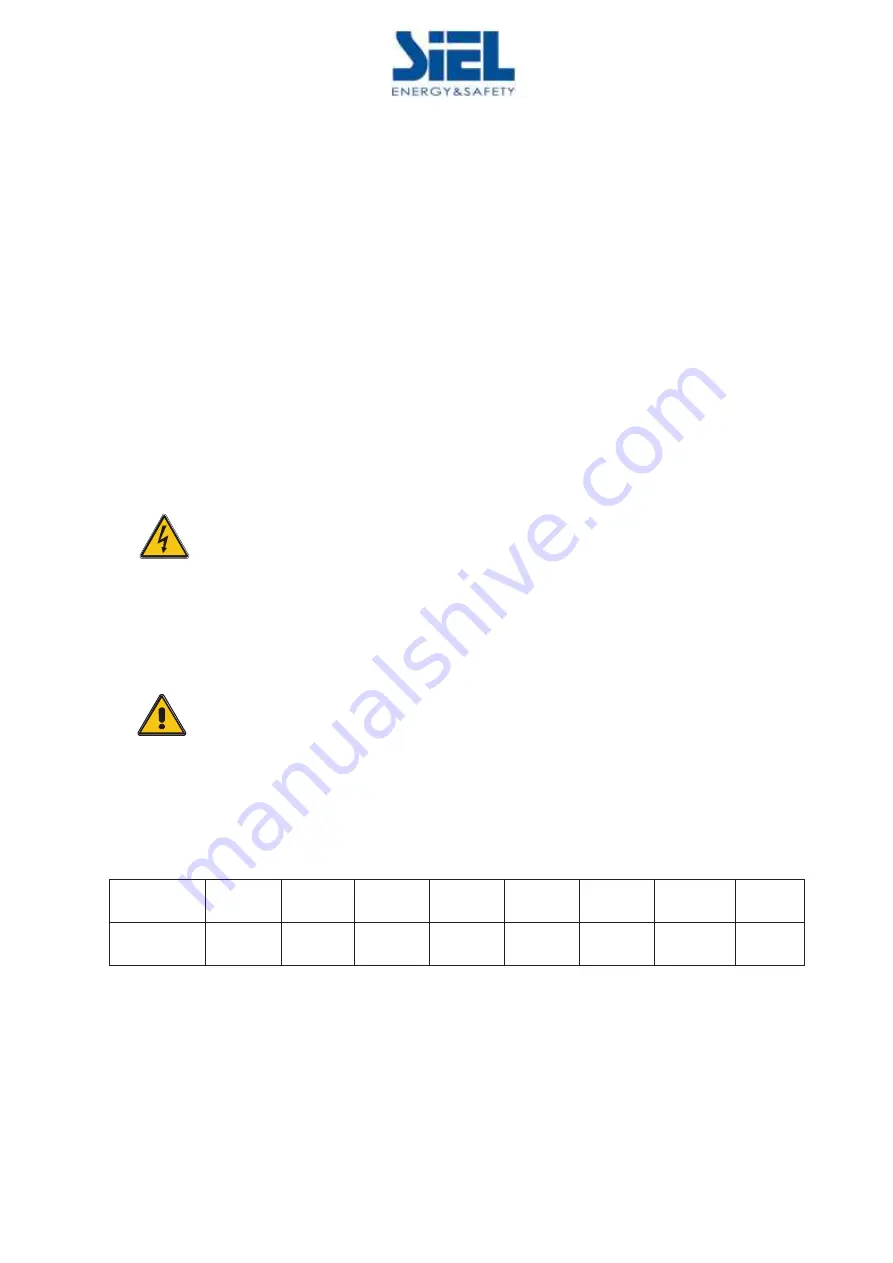
IV432E Rev.01 SIEL S.p.A.
Installation and user manual
Date of issue: 2021-05-05
Pag.
11
of
50
+ FR
3.4 Installation notes
Note: Consider for the convenience of operation and maintenance, the space in
front and back of the cabinet should be left at least 100cm and 80cm respectively when
installing the cabinet.
ƹ
Please place the UPS in a clean, stable environment, avoid the vibration, dust, humidity,
flammable gas and liquid, corrosive. To avoid from high room temperature, a system of room
extractor fans is recommended to be installed. Optional air filters are available if the UPS operates
in a dusty environment.
ƹ
The environment temperature around UPS should keep in a range of 0
ć̚
40
ć
. If the
environment temperature exceeds 40
ć
, the rated load capacity should be reduced by 12
ˁ
per
5
ć
. The max temperature can't be higher than 50
ć
.
ƹ
If the UPS is dismantled under low temperature, it might be in a condensing condition. The
UPS can't be installed unless the internal and external of the equipment is fully dry. Otherwise,
there will be in danger of electric shock.
ƹ
Batteries should be mounted in an environment where the temperature is within the required
specs. Temperature is a major factor in determining battery life and capacity. In a normal
installation, the battery temperature is maintained between 15°C and 25°C. Keep batteries away
from heat sources or main air ventilation area, etc.
WARNING!
Typical battery performance data are quoted for an operating
temperature between 20°C and 25°C. Operating it above this range will
reduce the battery life while operation below this range will reduce the
battery capacity.
ƹ
Should the equipment not be installed immediately it must be stored in a room so as to
protect it against excessive humidity and or heat sources.
CAUTION!
An unused battery must be recharged every 6months. Temporarily
connecting the UPS to a suitable AC supply mains and activating it for
the time required for recharging the batteries.
ƹ
The highest altitude that UPS may work normally with full load is 1500 meters. The load
capacity should be reduced when this UPS is installed in place whose altitude is higher than 1500
meters, shown as the following table:
(Load coefficient equals max load in high altitude place divided by nominal power of the UPS)
Altitude(m)
1500
2000
2500
3000
3500
4000
4500
5000
Load
coefficient
100%
95%
90%
85%
80%
75%
70%
65%
ƹ
The UPS cooling is depending on fan, so it should be kept in good air ventilation area.
There are many ventilation holes on the front and rear, so they should not be blocked by any exotic
obstacles.
3.5 External Protective Devices
For safety reasons, it is necessary to install, external circuit breaker at the input A.C. supply and the
battery. This chapter provides guidelines for qualified installers that must have the knowledge of local
wiring practices for the equipment to be installed.
If the protection against electric shock of the system where the UPS is installed is based on differential
current devices, the devices must be type B, ID min. 300mA, delay ≥ to 0.1s.












































